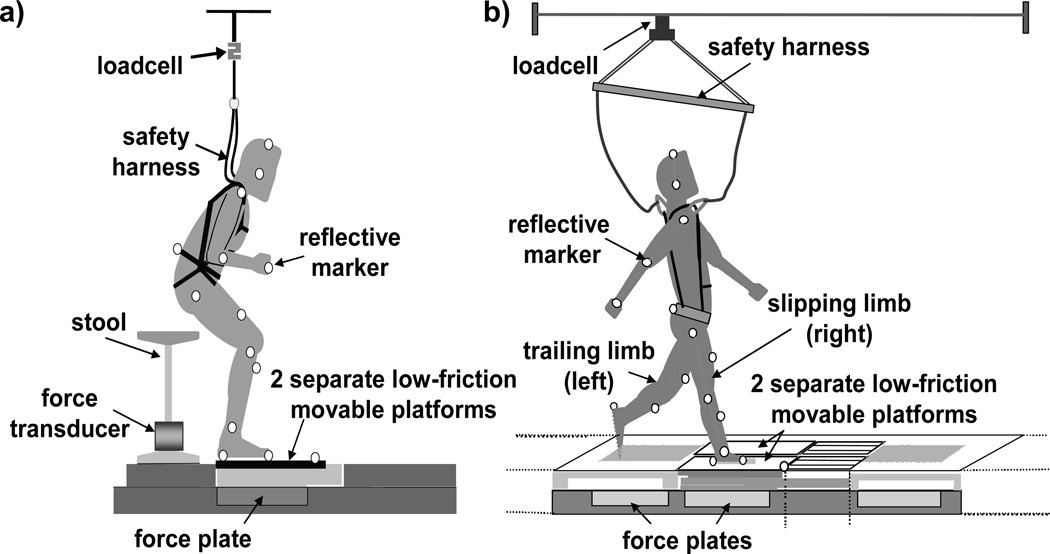Figure 1.
The diagrammatic representation of the experimental setup for a) sit-to-stand-slip and b) gait-slip. a) The diagram shows the average body position at seat-off. The force exerted on the stool was recorded by the force transducer bolted beneath the stool. b) The diagram shows average body position at leading/slipping foot touchdown (i.e., right foot). A slip was induced by releasing two low-friction movable platforms shortly after seat-off for sit-to-stand-slip and at the instant of leading/slipping foot touchdown for gait-slip. Each of the two platforms was mounted on a frame with two rows of linear bearings, and the frame was bolted on to two force plates to measure the ground reaction force. During both sit-to-stand-slip and gait-slip, the movable platforms were free to slide 150 cm and 90 cm forward for the right and left, respectively. The movable platforms were embedded in a 7-m walkway and made less noticeable to the subject by surrounding stationary decoy platforms. A set of 28 light-reflective markers were placed on bilateral upper and lower extremities, torso, and platforms. The subjects were required to wear a safety harness which was individually adjusted to prevent a fall to the ground. A load cell was used to measure the force exerted on the harness. Note that the safety harness system was much higher than that shown.

